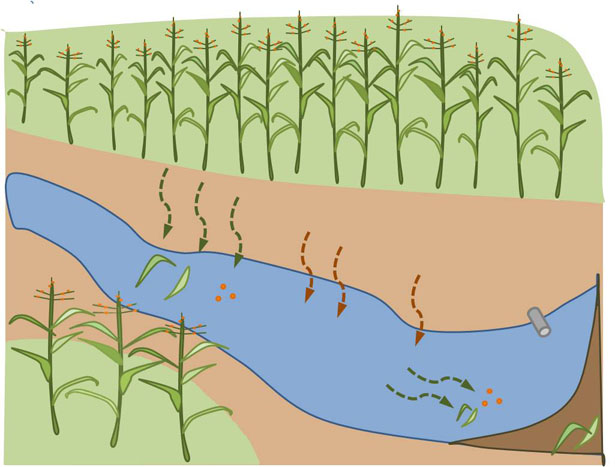In this post, Antonia Pott talks about their recently published paper “Impact of genetically modified organisms on aquatic environments: Review of available data for the risk assessment”.
Genetically modified (GM) crops are commercially used for over 20 years now. They are cultivated on a large scale in many countries. An often used trait in a GM crop is, for instance, insect resistance, which is realized by the expression of toxins derived from the soil bacterium Bacillus thuringiensis (Bt).
In our review we present the available scientific data dealing with the impact of genetically modified organisms (GMO) on the aquatic environment. We could identify only 39 publications, including 84 studies, dealing with GMOs in the aquatic environment. The available information of effect studies is restricted to a small number of crop plants, traits, events, and test organisms.
Studies that investigated the exposure of the aquatic environment to GMOs provide evidence that waterbodies are exposed to GM plant residues and free Bt toxin through multiple inputs. Four pathways exist for entry of GMO plant material or the dissolved toxin into the aquatic environment: (1) groundwater and soil pore water, (2) surface run-off, (3) wind drift, and (4) drainage. Overall, results from exposure studies indicate that the most relevant exposure route for Bt toxin from the field into streams is probably via wind drift and surface run-off of water or sediment. Several degradation studies indicate a half-life of Bt toxins ranging from few hours to several days, illustrating that the aquatic environment may be exposed for a long time, which is, however, insufficiently investigated.

By summarizing the available experiments and results, we could identify substantial knowledge gaps. However, in our analysis we demonstrate that, by now, basic data exist on both the effect of and exposure to GM crops. Therefore, risk assessment of GM crops for aquatic habitats is justified. It became obvious during this review that the lack of standardised methodologies reduces the comparability, and thus, the analysis of such data. A set of standardised methods or general guidance on methodology and endpoints of experiments with GM residues in aquatic environments would benefit risk assessment.
The paper was authored by Antonia Pott, Mathias Otto and Ralf Schulz, and published in Science of the Total Environment.
